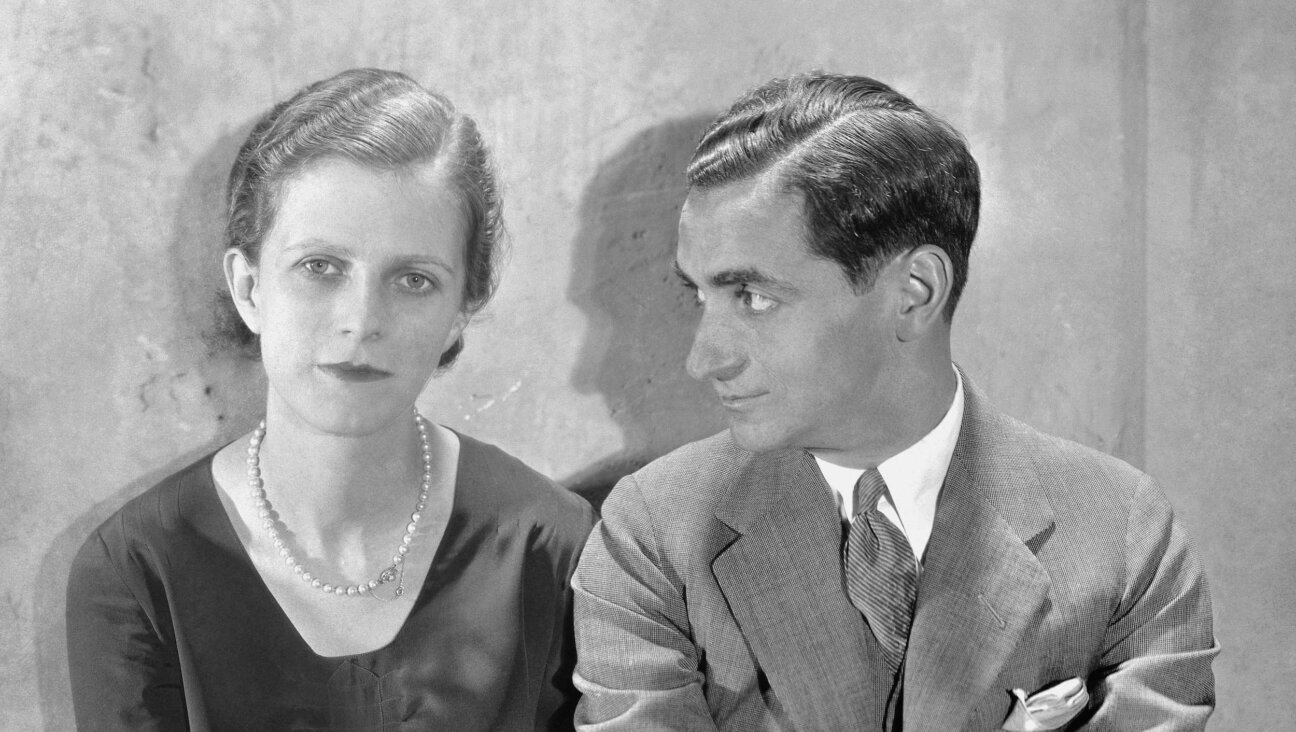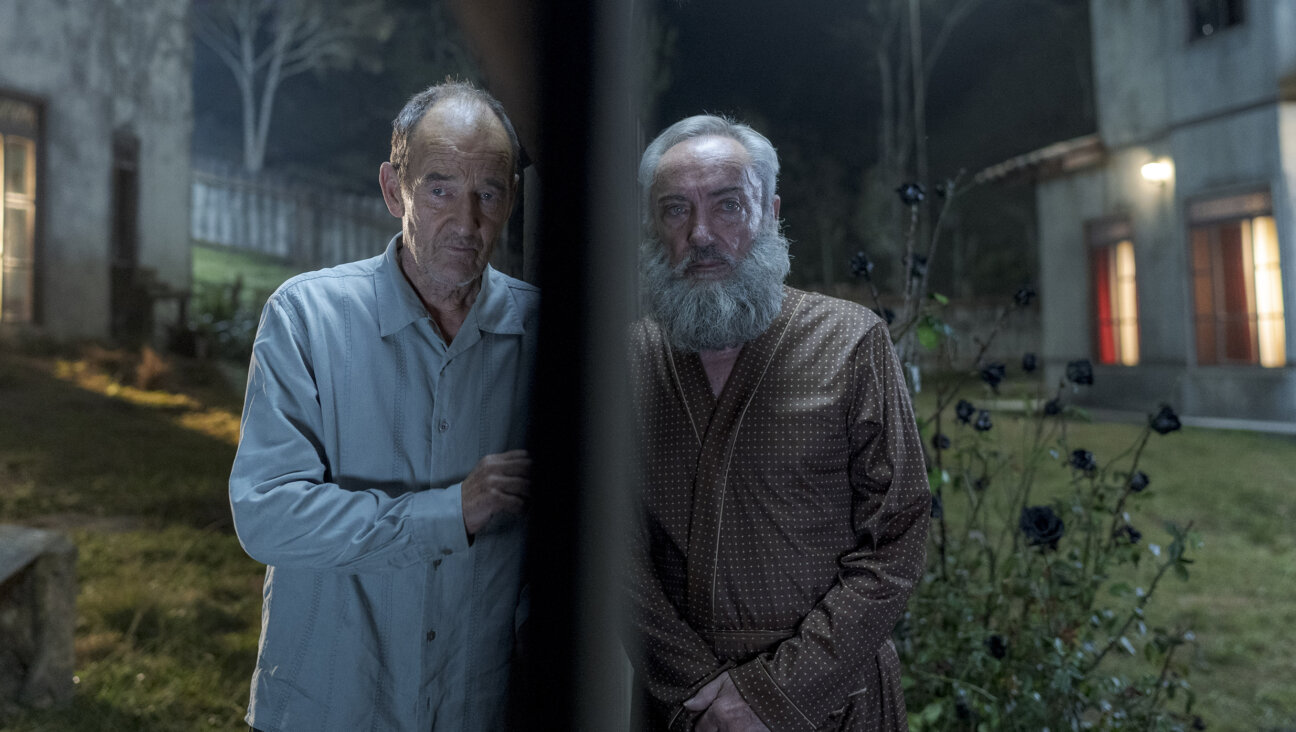5 Things I Learned About Marriage While Reading Genesis

Graphic by Angelie Zaslavsky
Genesis famously offers two “versions” of Adam and Eve’s creation. The first, in the first chapter of Genesis, is a broad overview: “And God created man in His image, in the image of God He created him; male and female He created them.”
The second chapter of Genesis presents a more detailed narrative: God forms the man Adam from the dust of the earth (adama), Adam dwells in Eden for a bit, and then God proclaims that “It is not good for man to be alone; I will make a fitting helper for him.” Afterward, God borrows a rib from Adam when he is sleeping, which he fashions into a woman. This act has profound symbolic significance, which Adam himself relates in a kind of poetic mode: “This one at last/ Is bone of my bones/And flesh of my flesh./This one shall be called Woman (isha)/For from man (ish) was she taken.”
In examining the verses of both creation stories, we learn important lessons about not only the origins of human beings and our relationship to our creator, but also about what marriage should involve.
Embracing Genesis’ messages about marriage may require departing from certain sacred cows of modern Western life. But Genesis suggests that the tradeoff is worth it. Here’s my take on it:
1. Gender Equality Is An Ideal In The Bible
First and foremost, the episodes of Genesis demonstrate that equality between men and women is a value in the Bible. Critiques of Jewish tradition point out the inequality inherent in so many of its power dynamics: man and woman, Jew and non-Jew, priest and non-priest, etc. An apologetic defense might maintain that such hierarchies are simply an inescapable part of reality, which the religious texts reflect.
In truth, the dual accounts of Genesis confirm, and undermine, both points of view. The initial presentation of man and woman is one of equal significance. ”Adam” here doesn’t seem to be a “man” specifically; rather a human being who is then subdivided into man and women. The Midrash riffs on this wording to suggest that God’s first human creation was actually a dual-gender person with two faces. Thus, the initial biblical presentation indicates that when we are considering the creation of “man”, this creature is really a template, and a model, for all people.
Before we have gender in the Bible, we simply have the progenitor of all human beings, all made in God’s image. Our central religious text relates to all of us, first and foremost, as individuals with responsibilities toward God.
2. Sameness Is A Myth
Just as the first account of creation suggests a kind of proto-egalitarian humanistic ideal, the second account offers something more complex.
As Adam provides names for “all the cattle and the birds of the sky and all the wild beasts”, he realizes that his potential helpmate won’t be found among them; “but for Adam no fitting helper was found.”
In the midst of this proliferation of creatures and their identities, Eve comes into the picture. She is not a mirror image of Adam, nor should she be. The fact that Adam looks at her and sees “the bone of my bones/the flesh of my flesh,” does not only reflect some kind of inborn hierarchy, it suggests something else: A profound connection between men and women despite, and perhaps because, of the overwhelming differences between them.
3. Imbalance Creates Relationship
Later on in Genesis, after succumbing to the temptation of the forbidden fruit on the Garden of Eden, the differences between men and women start to look like a curse.
God punishes both Adam and Eve in separate ways. Men will have to work by the sweat of their brows, and women will suffer pain in childbirth, as well as the reliance upon, and domination by, men: “Your urge shall be for your husband/And he shall rule over you.”
Yet even here, the portrait is more multifaceted than it is misogynist. Somehow a woman’s yearning for a man is intertwined with his power over her. We see this theme of interdependence in the early passages of Genesis as well, when God creates woman as a response to man’s loneliness.
In a 1972 Talmud lecture entitled “And God Created Woman,” the philosopher Emmanuel Levinas reflects upon the difference between the midrashic two-headed male-female creation of Genesis 1 and the more gender imbalanced, as well as more interesting, account of Genesis 2. Levinas argues that a perfectly just world would have necessitated the creation of separate and fully equal human beings.
Yet this seemingly ideal universe would be missing something, namely the imbalance necessary to bind human beings to one another:
“This initial independence of two equal beings would no doubt have meant war… Real humanity does not allow for abstract equality, without some subordination of terms. What family scenes there would have been between the members of that first perfectly equal couple! Subordination was needed, and a wound was needed; suffering was and is needed to unite equals and unequals.”
4. Imperfection Creates Opportunity
As Levinas points out, Genesis 2 unites Adam and Eve through a wound, a rib that God removes from Adam. It is striking to witness God, fresh after creating the world, deface his most important creation. In the first account of creation, God creates a human being fully formed and presumably perfect. In the second account, God emphasizes Adam’s incompleteness without Eve. The wound which produces Eve is the wound which makes it possible to make room for another person in one’s life.
Relationships are predicated upon absence – we are missing something crucial when we are alone, a void that only someone else can fill.
5. Marriage Is A Form Of Creation
Until the verse “Hence a man leaves his father and mother and clings to his wife; so that they become one flesh”, God is the only creator in the Biblical account.
But the union between the differentiated man and woman makes possible a new sort of creation. In a sense, this is a return to the ideal of equality presented in Genesis 1 — the presentation of man and woman becoming “one flesh” recalls the two-faced, one-bodied Janus of Rabbinic legend. Here, however, this unified being is only achieved after the separate, different and unequal male and female components come together as “one flesh.”
Unlike the androgynous human template of Genesis 1, which silently stands mostly in relation to God its creator, the dynamic, multifaceted partners of Genesis 2 are capable of turning towards one other and emulating God by bringing new life into the world.
Sarah Rindner teaches English literature at Lander College for Women. She writes on Jewish and literary subjects for the Jewish Review of Books, Mosaic Magazine, and The Lehrhaus where she is an editor. You can follow her through her website, The Book of Books.
















